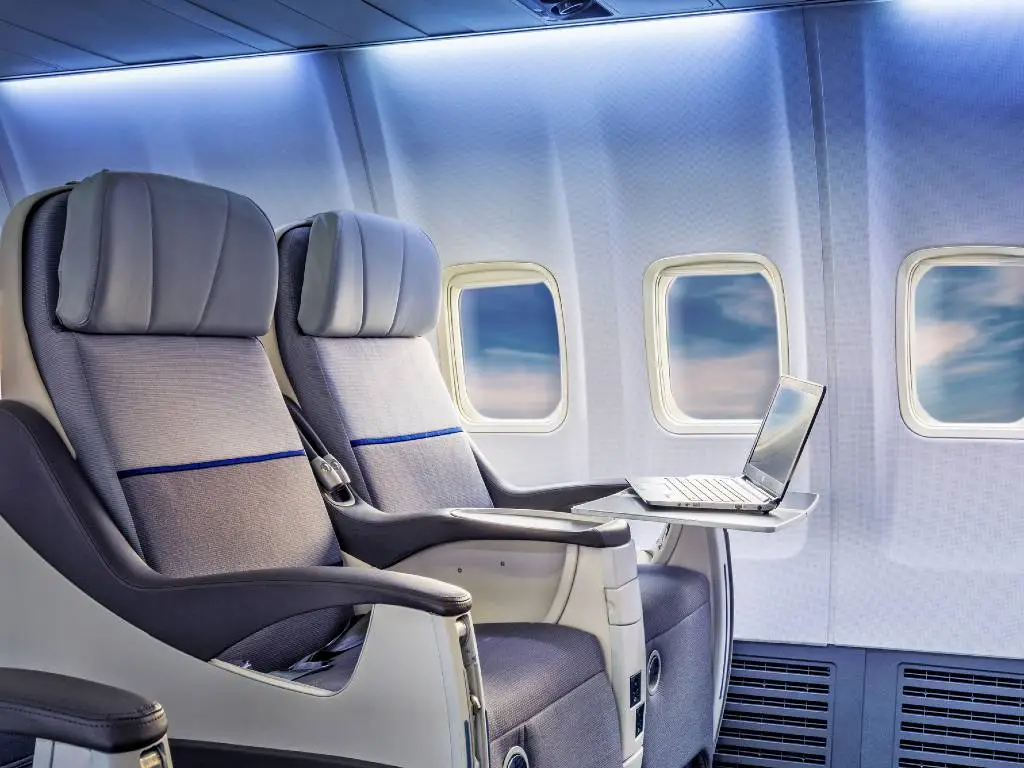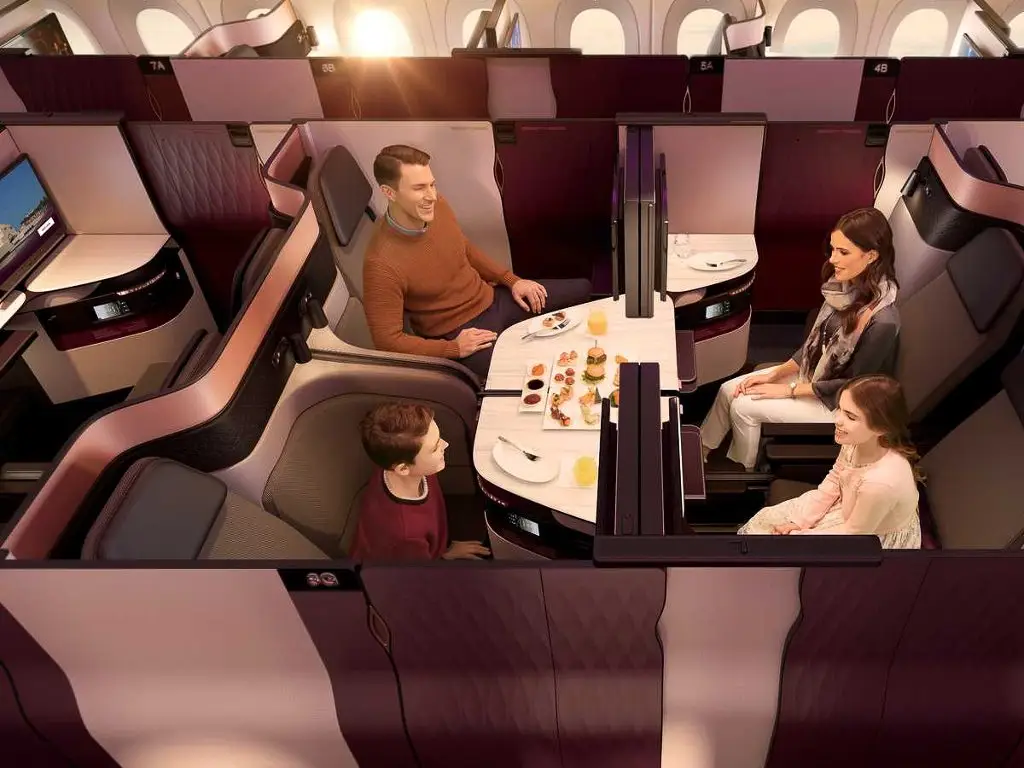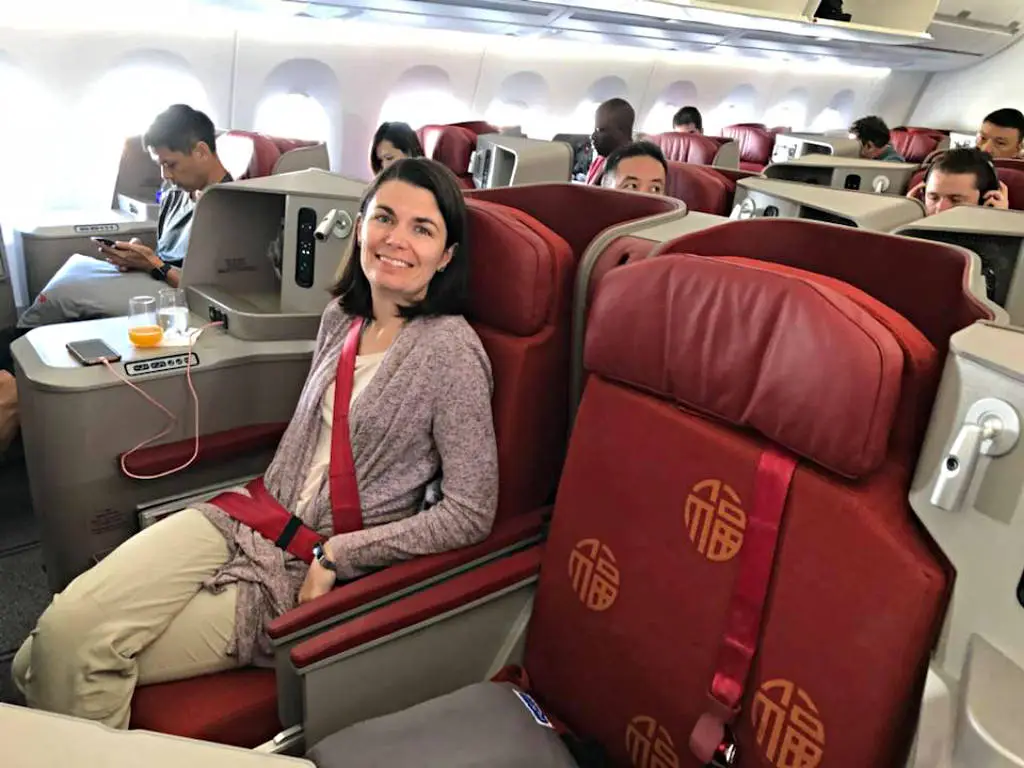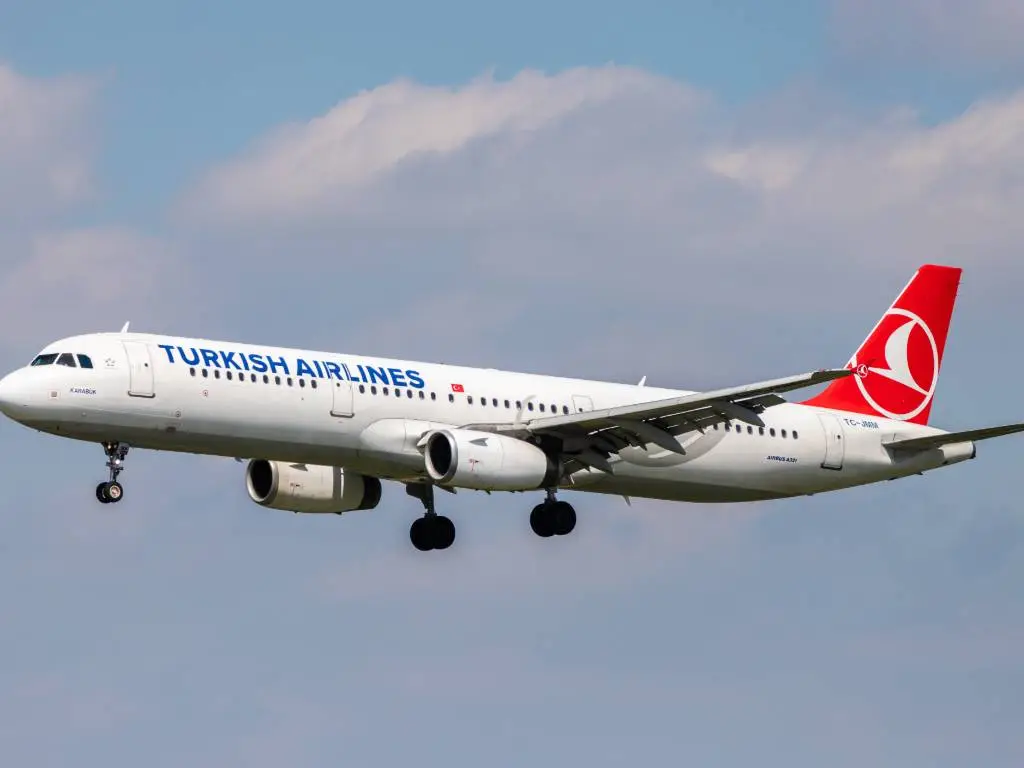
How to Get Cheap First Class Tickets: Secrets to Scoring Deals
Table of Contents
Key takeaways
- First class offers the highest level of service on airlines, featuring spacious seating, premium food and drinks, and superior service compared to business, premium economy, and economy classes. However, the experience varies significantly between domestic and international flights.
- First-class tickets are expensive, and prices are influenced by demand and booking patterns. Discounted fares may be available during low-demand periods.
- Travelers can find cheaper first-class options by booking in advance, choosing less popular flights, checking fares from less popular airlines and airports, and monitoring price fluctuations.
- Flyers can upgrade to a first-class flight by using cash, points, or bidding to upgrade from economy tickets. Another option is to ask directly during check-in.
- With a Going Elite membership, you can access the cheapest premium class seats that we can find. Our worry-free notification system lets you receive deals directly to your inbox or app. We even send out mistake fares, which can be how you fly business class for the price of economy.
What is first class, and what does it usually include? (The experience worth chasing)
First-class products and amenities vary by airline, aircraft, and flight length, but in a nutshell, they’re often a significant premium over economy class and premium economy class. They’re generally the highest-quality and most expensive class of service onboard a commercial flight.
First-class tickets typically include a substantial free checked baggage allowance (usually two bags per person or more). Depending on the airline and airport, priority lanes may also be at the ticket counter/baggage check and TSA screening (but not TSA PreCheck unless passengers otherwise qualify).
Domestic first-class tickets do generally not include access to a lounge unless the itinerary includes an international first-class or business-class flight. Alaska Airlines is a notable exception—passengers who have purchased first-class fares (either with cash or Alaska Mileage Plan miles) have access to the Alaska Lounge (but not partner lounges) during their journey. Passengers who upgrade, either with cash or miles, are not entitled to lounge access.
First-class tickets also include premium alcoholic beverages in glassware instead of plastic (flight attendants must discontinue alcohol service if passengers appear intoxicated) and chef-curated meals on longer flights.
Another interesting perk is that the entertainment headsets or earbuds the airlines sometimes sell in Economy are typically offered complimentary in first class, or they may be of better quality. First-class cabins may also have pillows and blankets available, which have generally disappeared from economy cabins, particularly on domestic routes.
First-class passengers also board and deplane the aircraft first.
First class vs other tickets
First class vs business class
- Business class is typically offered on intercontinental flights and, with the exception of flat-bed sleeper seats, is generally similar in style and delivery to domestic first class.
- International first class offers premium amenities and meals. International business class provides enhanced dining, priority boarding, and superior service, often rivaling domestic first class (but may not match the luxury of international first class).
- Internationally-configured aircraft sometimes operate domestic routes. Airlines may sell international business class seats as domestic first class with domestic service.
Read more about the difference between first class and business class.
First class vs. premium economy
- Premium economy has slightly wider seats and more legroom compared to economy but doesn’t match first-class comfort.
- First class includes priority boarding, dedicated check-in, lounge access, and premium meals and drinks. On the other hand, premium economy includes improved meals and sometimes priority boarding but lacks the luxury and exclusivity of first class.
- First class is significantly more expensive. That’s why many travelers opt for premium economy, which is a compromise between economy and business class in price and comfort.
First class vs. economy
- Economy seats are compact with limited reclining and minimal legroom, unlike the options available in first class.
- Economy typically includes basic amenities with limited offerings, and most services come at an additional cost. First class comes with many complementary services, such as gourmet meals and beverages.
- While first class often includes priority services, lounge access, and increased baggage allowance, economy passengers typically don’t have these privileges without additional fees.
When to upgrade to first class (and when not to)
Choosing whether to fly first class or not can be a tough decision. There are many reasons why upgrading can be the right choice for you, especially if you have the means to afford it (cash, miles, or points). One of the main benefits of first class is the personal cabin with a lie-flat seat. If you have a long-haul flight ahead and want to land fully rested at your destination, having a bed to lie on can make the difference. Besides, if you're paying in cash, flying in a higher class will often help you earn more points or miles (and can also help you maintain or earn elite status).
Of course, this doesn’t mean that flying first class is for everyone. If we’re being honest, sometimes opting for a business or even a premium economy flight can be a better call. For example, on shorter flights, you won’t have much chance to enjoy the premium amenities or score a nice nap on the lie-flat bed.
Still, even if you might not make the most of first-class, it can still be worth the upgrade. A first-class trip can be a nice way to celebrate a special occasion, like a honeymoon or graduation. The perks offered by the airline will help make it an even more memorable trip.
How much is a first-class flight?
Like tickets in other classes of service, the primary driver of price for first-class tickets is demand. The faster airlines can sell seats, the faster the price will increase. Airlines use historical sales data to determine the fare for an upcoming flight. In general, domestic first-class fares are the least expensive when business travel demand ebbs in business markets (think New York to Chicago), such as during weekends and holiday periods.
Some leisure markets also have demand for first-class seats. Resort destinations in Hawaii, Mexico, and the Caribbean will have high demand for first-class seats during holidays, particularly during school breaks and the winter holidays.
A midrange roundtrip in first class from New York to Los Angeles costs $510–$1,600 per person for a nonstop flight. For shorter flights, for example, from San Francisco to Seattle, it costs around $285–$410 roundtrip per person.
The cheapest first-class international flights (using New York to London as an example) typically have a midrange figure between $4,000 and $9,000 roundtrip for a nonstop flight.
Going lets you know about the best deals for first class, which can save you hundreds of dollars. Our Elite members have received many cheap flights like Boston nonstop to NYC for $233 roundtrip and Newark nonstop to Miami for $357 roundtrip.
How to find the cheapest first-class flights (Expert tips)
Use tools to track prices
Finding a cheap first-class flight is easier when you know price trends and have flight alerts set for your destination. Tools like Google Flights, Momondo, and Skyscanner help you monitor prices and detect trends. However, if you want to receive the best first-class deals directly on your phone, consider downloading the Going app and becoming an Elite member. With a team of Flight Experts constantly scanning for deals, we’re not just tracking prices—we let you know whether a deal is truly worth it based on historical trends and market insights.
Check fares on the “underdog”
First-class fares are competitive (just like any other fare type), and airlines will offer discounts to sell their inventory when necessary. Airlines often don’t have difficulty selling flights to or from their hubs, but when they’re flying to a city that is a hub for another airline, they may sell seats less quickly. For example, Delta Air Lines flies nonstop from San Francisco (a hub for United) to Seattle/Tacoma (a hub for Alaska Airlines). Delta’s hub in Seattle is relatively new, and they may have a less established customer base, so they often offer a lower first-class fare in that market.
Internationally, the differences can be even more pronounced. Travelers headed from New York to Paris can fly nonstop on Air France in their vaunted La Premiere cabin at roundtrip fares from around $8,500 during low-demand periods. Bargain-seeking Paris fliers can fly via London on British Airways First, however, for about $4,000 roundtrip (but Air France doesn’t return the “favor” for first-class fliers bound for London via Paris).
Look into nearby airports and choose less popular flights
We’ve said it once, and we’ll say it as many times as is necessary—the more demand, the higher the fare (even for first class). Looking into alternate airports can dramatically lower costs, especially when flying from or into a smaller hub with fewer flights. For example, if you’re flying from New York, check for flights to Newark (EWR) and LaGuardia (LGA). Not only does this give you a broader range of fare options, but it also lets you choose the best itinerary for your schedule.
Likewise, some flights at unpopular times (like overnight flights, flights with unattractive timings like 6am departures on Saturday morning, or flights with circuitous routing or multiple connections) may have lower first-class fares. Flights to and from leisure destinations (like Cancún or Maui) also generally have lower demand for all cabins during the workweek.
Start shopping far in advance
In some markets, airlines may sell first-class inventory at non-refundable levels with significant restrictions (like a 50-day advance purchase requirement). It depends on the market forces at play in a particular market, but it doesn’t hurt to check far in advance of travel. Paid first-class inventory tends to book quite close to departure, but if an airline ends up with more seat inventory than they have forecasted to sell, they discount far out to fill seats.
Discover our full guide to finding cheap flights to anywhere.
Keep checking back
One of the best perks of first-class fares is that passengers can usually upgrade (either by paying a fee or simply paying the difference in fare) after purchasing an economy-class ticket. First-class fares fluctuate with booking trends, and what seemed like a substantial fare difference during booking can shrink days or weeks later.
Know your frequent flier benefits
Many airlines that sell upgrades to their frequent fliers also offer “instant upgrades” starting several days before the flight to frequent fliers who buy certain fare categories (typically higher than the lowest economy fare). These airlines often have search functions built into their websites, allowing frequent fliers to see these fare types side-by-side with the lowest fare for easy value comparisons.
Most of these programs have complex rules that could be the subject of another entire article, and the rules and procedures vary from airline to airline.

How to upgrade to the cheapest first-class flights
With cash–before the day of departure
Many airlines offer first-class upgrades, either for a fee or a fare difference, in the manage reservation portal on their websites until the day of departure (some until check-in closes for the flight). The price can vary depending on the type of upgrade being offered, so it’s good to check back in case it goes down. The upgrade fees or fare differences are typically nonrefundable post-purchase.
With points–before the day of departure
Many airlines also allow frequent fliers to use their accumulated points to upgrade to first class. The number of points required on domestic flights can often approach the amount needed for a free economy-class ticket, so value those upgrades wisely. On international flights, many airlines levy a cash copay in addition to the redeemed points but may waive this for top-tier fliers.
By bidding
Some airlines have bidding systems for first-class upgrades. A typical procedure is that the airline will email passengers with coach tickets several days before check-in begins and invite them to bid using an online portal. There’s a minimum bid, and airlines will award an allotted number of seats to the highest bidders at the end of the process. They typically won’t solicit bids if the first-class cabin is close to full, and they won’t offer every remaining seat for bid, reserving some for last-minute bookings and rebookings in the case of flight delays.
While this practice can be a good opportunity to book a cheap first-class flight, it has lost popularity over recent years, so don’t rely on it to find a good deal.
During check-in online or at the airport
Many airlines won’t miss another opportunity to sell upgrades during the check-in process if they have seats available. You can find these sales on the airlines’ websites, through their check-in kiosks, or at the ticket counter or gate.
On board
On-board upgrades are rare among US carriers, generally because of union rules, but some airlines (particularly outside the US) will sell upgrades after boarding if seats are available. Some US carriers will also upgrade frequent fliers after boarding if there are no-shows in first class, but this varies by airline.
Operational upgrades
There are situations where airlines will upgrade passengers to first class for free. This generally happens only after airlines have exhausted all possible avenues to sell upgrades for cash or points and all the frequent fliers have been upgraded. There are a number of reasons why this happens, ranging from overbooking to aircraft weight and balance. There’s no way to strategize or plan for this—only to enjoy it in the rare circumstances that it happens.
Download Going’s app and find more comfortable seats, extra legroom, priority boarding, lounge access, and more—all while saving thousands of dollars
Airlines that offer first-class flights
The following airlines provide first-class service on US domestic routes, offering a mix of comfort, destinations, and premium experiences:
- Alaska Airlines: Known for its West Coast presence, Alaska Airlines offers first-class flights to destinations like Seattle, Portland, Los Angeles, and even cross-country routes to New York and Boston.
- American Airlines: With one of the largest networks, American Airlines’ first class is available on routes spanning major hubs like Dallas–Fort Worth, Miami, and Charlotte to cities across the US and the Caribbean.
- Delta Air Lines: Delta’s first-class service connects travelers to key destinations, including Atlanta, Minneapolis, and Salt Lake City, with options for transcontinental routes to New York, Los Angeles, and Seattle.
- Hawaiian Airlines: Hawaiian offers first-class service between the US mainland (like Los Angeles, San Francisco, and Seattle) and its Hawaiian island destinations, providing a luxurious way to start your tropical getaway.
- United Airlines: United offers first class on domestic routes from hubs like Chicago, Denver, and Houston, as well as premium transcontinental service to destinations like San Francisco, Newark, and Boston.
Spirit Airlines sells the Big Front Seat onboard its aircraft, which is similar to the seats in US domestic first class, but there is no other difference in service or amenities for customers seated in that section.
JetBlue’s Mint, which the airline likens to a premium international business class, is available in select long-haul (mostly coast-to-coast) markets and generally not on short or medium-haul flights.
It’s important to explain that while most airlines have modernized their fleets to include first class on most of their flights, some of the smallest regional aircraft on some airlines have only economy class.
Tools like Skytrax provide airline rankings and customer reviews for travelers looking to compare first-class experiences across airlines, while SeatGuru offers detailed seat maps and feedback on individual seats.
Read more about first class:
- Guide to American Airlines First Class
- The Best Airlines for Long Haul Business and First Class
- The Best Airlines for Domestic First Class
Some of the recent first-class deals found by Going
Flying first class is cheaper for Going Elite members. With our exclusive membership, you receive the best expert-curated deals in premium economy, business, and first class. The best part? Elite members get every single mistake fare we find, which can potentially save you thousands on first-class options.
Become an Elite member by downloading the Going app. Once you sign up, you’ll start receiving amazing offers like these recent deals we’ve sent our members:
- NYC to Rome for $2,657 roundtrip
- Chicago to London for $3,449 roundtrip
- NYC and LA to Hong Kong for 250k-320k points roundtrip
- NYC to Abu Dhabi for 115k points one-way

Get the cheapest first-class flights with our Elite membership!
With Going’s Elite membership, you’ll get alerts about exclusive deals, including discounts on high-fare classes. This way, you can enjoy premium perks and travel amenities like priority boarding, lounge access, and more at the best price. Sign up for our travel membership trial today.
Frequently asked questions
What does first class on a plane offer?
Are first-class seats worth it?
Is first class better than business class?
What airline has the cheapest 1st class?
What is the average cost to fly first class?
How do you fly first class for the price of economy?
How do I not pay full price for first class?
How do airlines choose who to upgrade to first class?
What do airlines do with unsold first-class seats?
Last updated September 10, 2025
Articles you might like
View All
Qatar Airways Business Class & QSuites: Features, Routes & Benefits
Dec 1, 2025
7 min read

How to Get Business Class Tickets for Cheap (Airlines Hate This)
Nov 18, 2025
3 min read

Turkish Airlines Business Class: Full Review from Seats to Service
Nov 12, 2025
7 min read





